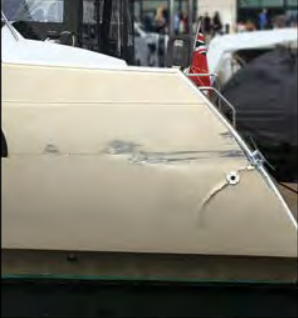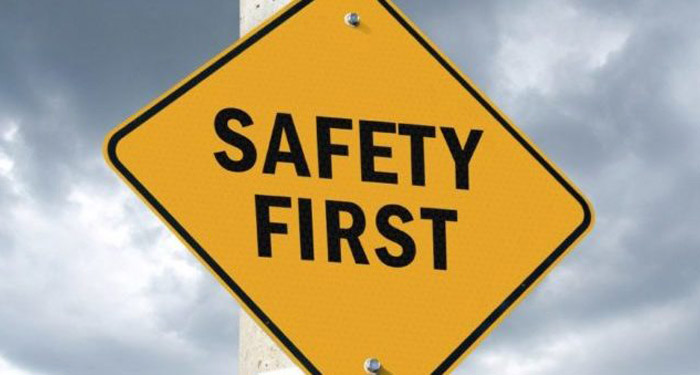UK MAIB focuses on a collision accident concerning a luxury catamaran and a ferry. The catamaran tried to avoid the collision but its port side made heavy contact with the ferry. The Safety Digest notes that passage planning is of a great importance for better-safety conditions.
The Incident
During a summer weekend, a commercially operated luxury catamaran was conducting a 3-day cruise in coastal waters. There were seven people on board; the professional skipper and six paying guests, some of whom had previous sailing experience.
After spending Saturday anchored by the beach, the skipped decided to voyage a short distance to a nearby harbour where the plan was to drop the anchor so the guests could go ashore for the evening. In the harbour’s approach channel, the catamaran was steered into wind, the mainsail was lowered and the engine started in preparation for motoring to the anchorage.
In the meantime, a chain ferry operated a usual service across the narrow harbour entrance and, in accordance with local byelaws, all small vessels were required to keep clear of the ferry.
As the catamaran approached the harbour entrance, one of the guests was steering it from the helming position on the port side, and the skipper was monitoring from the starboard helming position. The skipper noticed that the chain ferry was starting its crossing, so he told the guest at the port helm to engage astern gear and hold position to allow the ferry to pass ahead.
The skipper tried to hold the vessel’s position using astern power, but the control of the catamaran was lost. The vessel swept sideways towards the crossing ferry by the strong tidal stream. Realising that the situation was deteriorating the skipper transferred throttle control to the starboard side console then applied full power ahead on the port engine and maximum starboard rudder in an attempt to steer away from the chain ferry.
However, this was unsuccessful and the catamaran’s port side made heavy contact with the ferry.

The harbour entrance was also subject to strong tidal streams; at the time of the accident, there was about 3kts of stream flooding into the harbour.
In light of the event, the shipper made a ‘Pan Pan’ emergency radio call and later checked all the guests for their safety. Later on, a harbour patrol boat and the inshore lifeboat were on hand to help the catamaran safely alongside. There were no injuries but the catamaran was damaged by the collision.
Lessons Learned
- Passage planning is a vital part of safe navigation. The luxury catamaran was less than a year old and this was the first time it had been taken into this particular harbour by the skipper. Although aware of the tidal stream, the skipper was not familiar with the local regulations that required small craft to keep clear of the chain ferry. In such circumstances, it is vital that all aspects of the passage plan are addressed and that careful thought is paid as to how the local conditions might influence safe navigation. Planning should include checking the pilot books and harbour authority websites or guidebooks for up to date local information. Once the catamaran was heading across the tidal stream, there was very little that could be done to recover the situation. With more detailed passage planning, the risks associated with the tidal stream and the obligation to avoid the chain ferry would have been more apparent, potentially leading to a safer plan.
- Holding position by stemming the tidal stream using astern propulsion is a tricky seamanship manoeuvre in any vessel. Even in a twin-engine catamaran it would require a high degree of skill on the part of the helmsman. In this collision, vital time to escape the deteriorating situation was lost when the boat was side onto the stream, and when control was transferred by the skipper. As soon as it became apparent that there was going to be a requirement to avoid the chain ferry, the boat’s heading could have been reversed so it was heading into the stream away from the ferry, resulting in a higher degree of ship-handling control.
- Managing guests on board commercially operated yachts is a significant planning factor for the crew. On previous charters this catamaran had been operated by two crew members; however, on this trip the skipper was the only professional crew member. This decision had been taken by the managing company because some of the guests had previous sailing experience and it was assumed that they would be able to assist the skipper. However, even guests with previous sailing experience can be a distraction for the crew on a commercially operated yacht. Therefore, it is important to assess all the risks and associated tasks, including guest management, to ensure the vessel is operated safely




























































